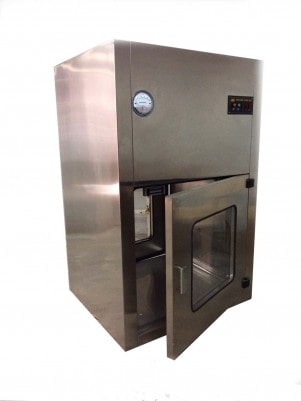

Mon Feb 12, 2024
Transfer Hatches for Clean Room
Transfer hatches for clean rooms are specialized portals designed to maintain the integrity of a clean room environment while allowing for the transfer of materials, equipment, or personnel in and out of the clean room. These hatches are crucial in environments where strict contamination control is necessary, such as pharmaceutical manufacturing, semiconductor fabrication, and biotechnology research.
|
Construction |
Stainless Steel 304 Grade |
|
Dimensions |
300x300x300mm/450x450x450mm/600x600x600mm Or Customized |
|
Door |
With Electromagnetic Lock |
|
Window |
Fitted With Tempered Glass |
|
Electricals |
LED Light, UV Light, Electromagnet For Door Interlocking, Buzzer And Indicating Lamps |
|
UV Lamp |
Germicidal Activity |
|
Power Supply |
Work On 220 / 230 Volts AC |
| Pharmaceutical industries | Chemical research laboratories | Electronic industry |
| Semiconductor production | Food processing industry |
|
Construction |
Stainless Steel 304 Grade |
|
Dimensions |
300x300x300mm,450x450x450mm,600x600x600mm Or Customized |
|
Door |
With Electromagnetic Lock |
|
Window |
Fitted With Tempered Glass |
|
Electricals |
LED Light, UV Light, Electromagnet For Door Interlocking, Buzzer And Indicating Lamps |
|
UV Lamp |
Germicidal Activity |
|
Hepa Filters |
Having Efficiency Rating As High As 99.99% Thus Retaining All Air-Home Borne Particles Of Size 0.3 µ And Larger. |
|
Accessory |
Manometer / Magnahelic Gauge |
|
Blower Motor |
Standard |
|
Power Supply |
Work On 220 / 230 Volts AC |
Here are some key features and considerations for transfer hatches in clean rooms:
When selecting transfer hatches for a clean room, it's essential to consider factors such as the level of cleanliness required, the types of materials or equipment being transferred, and any specific regulatory requirements applicable to the industry or application. Consulting with clean room design experts or suppliers can help ensure that the transfer hatches chosen are suitable for the specific needs of the clean room facility.
Related Clean Room products